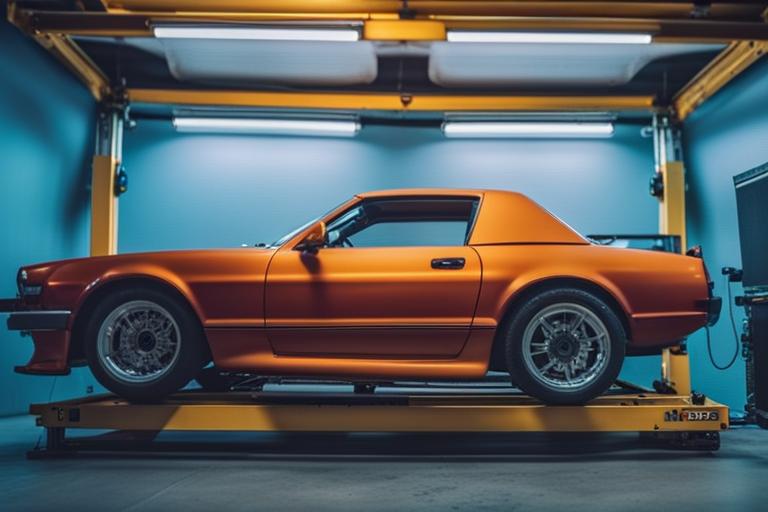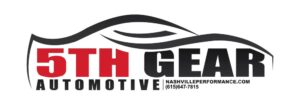Auto tune up Overview
Are you looking to improve your car’s performance or appearance? Car tuning might be what you need. Car tuning is the process of modifying a car to improve its performance, appearance, or both. In this article, we will explore the different types of car tuning, the benefits and drawbacks of each, the costs and risks involved, and the safety and legality of car tuning. Let’s dive deep in auto tune up!
Types of Auto tune up
| Performance Upgrade | Description |
|---|---|
| Engine Upgrades | Upgrades to increase a car’s horsepower and torque, such as upgrading the air intake system, installing a high-performance exhaust system, and adding forced induction. |
| Turbocharging | Using exhaust gases to spin a turbine, which compresses the air entering the engine to increase the amount of air and fuel that can be burned, resulting in more horsepower and torque. |
| Nitrous Oxide Injection | Injecting nitrous oxide into the engine’s air intake system to allow more fuel to be burned, resulting in a significant increase in horsepower and torque. |
| Air Intake Systems | Upgrading a car’s air intake system to increase the amount of air entering the engine, resulting in more horsepower and torque. This can include installing a cold air intake system or a ram air intake system. |
| Exhaust System Upgrades | Upgrading a car’s exhaust system to increase its horsepower and torque, improve its sound, and reduce backpressure. This can include upgrading the exhaust manifold, installing a high-performance catalytic converter, and installing a performance exhaust system. |
| ECU Tuning | Modifying a car’s engine control unit (ECU) to adjust the fuel and ignition timing to increase a car’s horsepower and torque, improve its throttle response, and improve its overall performance. |
| Brakes and Suspension Upgrades | Upgrading a car’s brakes and suspension to improve its handling and braking performance. This can include upgrading the brake pads and rotors, installing larger calipers, and upgrading the shocks and struts. |
Car tuning can be broken down into several categories, each with its own focus and goals. Here is an overview of the most common types of car tuning:

Engine Auto tune up
Engine tuning involves modifications to the engine to improve its performance. This can include air intake systems, exhaust upgrades, and engine management systems. Engine tuning can increase horsepower and torque, improve fuel efficiency, and enhance the engine’s sound.

Suspension Tuning
Suspension tuning involves modifying a car’s suspension system to improve its handling and ride quality. This can include lowering or raising the car’s ride height, upgrading the shocks and struts, and installing stiffer springs. Suspension tuning can improve a car’s cornering ability, reduce body roll, and provide a more comfortable ride.
Exhaust Tuning
Exhaust tuning is the modification of a car’s exhaust system, which can improve its sound and performance. This can include upgrading the exhaust manifold, installing a high-performance catalytic converter, and installing a performance exhaust system. Exhaust tuning can increase horsepower and torque, improve fuel efficiency, and enhance the engine’s sound.
Transmission Tuning
Transmission tuning involves modifying a car’s transmission to improve its shift times and overall performance. This can include upgrading the clutch and flywheel, installing a short-throw shifter, and upgrading the transmission fluid. Transmission tuning can improve a car’s acceleration, shift times, and overall performance.
Brake Tuning
Brake tuning involves upgrading a car’s brakes to improve its stopping power and reduce brake fade. This can include upgrading the brake pads and rotors, installing larger calipers, and upgrading the brake lines. Brake tuning can improve a car’s braking performance, reduce brake fade, and provide more consistent braking.
Interior Tuning
Interior tuning involves modifying a car’s interior to improve its comfort, convenience, and appearance. This can include upgrading the seats, installing a new sound system, and adding custom trim. Interior tuning can enhance a car’s comfort, convenience, and overall appearance.
Exterior Tuning
Exterior tuning involves modifying a car’s exterior to improve its appearance and aerodynamics. This can include installing a body kit, adding a spoiler, and upgrading the wheels and tires. Exterior tuning can enhance a car’s appearance, improve its aerodynamics, and make it stand out from the crowd.

Performance Tuning
Performance tuning involves modifying a car to improve its overall performance. This can include engine upgrades, suspension upgrades, brake upgrades, and transmission upgrades. Performance tuning can increase horsepower and torque, improve handling and braking, and provide a more engaging driving experience.
Auto tune up Overview
- Car tuning is the process of modifying a car to improve its performance or aesthetics.
- Types of car tuning include performance tuning and aesthetics tuning.
- Car tuning can be costly and risky, so it is important to do research and consult with professionals before embarking on a tuning project.
Personal Experience: The Benefits and Drawbacks of Performance Tuning
I’ve always been a car enthusiast and I love pushing the limits of what my car can do. A few years ago, I decided to invest in some performance tuning upgrades for my car and it was a game-changer. I upgraded my engine, added a turbocharger, and tweaked my exhaust system. The increase in horsepower and torque was immediately noticeable and I felt like I was driving a completely different car.
The benefits of performance tuning are clear – improved acceleration, faster top speeds, and a more responsive driving experience. However, there are also some drawbacks to consider. One major drawback is the cost. Performance tuning upgrades can be expensive, especially if you’re going for top-of-the-line parts and installations. Additionally, performance tuning can put more strain on your car’s engine and other components, leading to increased wear and tear and potentially costly repairs down the line.
It’s also important to note that performance tuning can be risky if done improperly. It’s crucial to choose a reputable shop with experienced technicians who know what they’re doing. Improper tuning can not only damage your car, but also put you and other drivers on the road in danger.
Overall, my experience with performance tuning has been positive, but it’s important to carefully weigh the benefits and drawbacks before making any decisions. I’d recommend consulting with a professional and doing plenty of research before embarking on a performance tuning project.

Aesthetics Tuning
Aesthetics tuning involves modifying a car’s appearance to make it more visually appealing. This can include body kits, spoilers, custom paint jobs, and aftermarket wheels and rims. Aesthetics tuning can enhance a car’s appearance and make it stand out from the crowd.
Performance Auto tune up
Performance tuning is the most popular form of car tuning and involves modifications to a car to improve its performance. Here are some of the most common performance upgrades:
Engine Upgrades
Engine upgrades can increase a car’s horsepower and torque, improve its acceleration, and enhance its sound. This can include upgrading the air intake system, installing a high-performance exhaust system, and adding forced induction such as turbochargers or superchargers.
Turbocharging
Turbocharging involves using exhaust gases to spin a turbine, which compresses the air entering the engine. This increases the amount of air and fuel that can be burned, resulting in more horsepower and torque.
Nitrous Oxide Injection
Nitrous oxide injection involves injecting nitrous oxide into the engine’s air intake system. Nitrous oxide is a powerful oxidizer that allows more fuel to be burned, resulting in a significant increase in horsepower and torque.
Air Intake Systems
Upgrading a car’s air intake system can increase the amount of air entering the engine, resulting in more horsepower and torque. This can include installing a cold air intake system or a ram air intake system.
Exhaust System Upgrades
Upgrading a car’s exhaust system can increase its horsepower and torque, improve its sound, and reduce backpressure. This can include upgrading the exhaust manifold, installing a high-performance catalytic converter, and installing a performance exhaust system.
ECU Tuning
ECU tuning involves modifying a car’s engine control unit (ECU) to adjust the fuel and ignition timing. This can increase a car’s horsepower and torque, improve its throttle response, and improve its overall performance.
Brakes and Suspension Upgrades
Upgrading a car’s brakes and suspension can improve its handling and braking performance. This can include upgrading the brake pads and rotors, installing larger calipers, and upgrading the shocks and struts.
Benefits and Drawbacks of Performance Tuning
Performance tuning can significantly improve a car’s performance, but it also has some drawbacks. Performance upgrades can be expensive, and they can void a car’s warranty. Performance upgrades can also decrease a car’s fuel efficiency and increase its emissions.
Aesthetics Tuning
Aesthetics tuning involves modifying a car’s appearance to make it more visually appealing. Here are some of the most common aesthetics upgrades:
Body Kits
Body kits are aftermarket parts that can be installed on a car to change its appearance. This can include front and rear bumpers, side skirts, and spoilers. Body kits can enhance a car’s appearance and make it stand out from the crowd.
Spoilers
Spoilers are aerodynamic devices that can be installed on a car to improve its downforce and reduce drag. Spoilers can enhance a car’s appearance and improve its handling at high speeds.
Custom Paint Jobs
Custom paint jobs can transform a car’s appearance and make it unique. This can include painting the car a different color, adding graphics, or applying vinyl wraps.
Aftermarket Wheels and Rims
Upgrading a car’s wheels and rims can enhance its appearance and improve its handling. This can include installing larger wheels and rims, or choosing a different style of wheel.
Window Tinting
Window tinting can improve a car’s appearance and provide privacy. This can include applying a film to the windows that reduces the amount of light that enters the car.
Lighting Upgrades
Upgrading a car’s lighting can improve its appearance and visibility. This can include installing LED headlights, taillights, or interior lighting.
Benefits and Drawbacks of Aesthetics Tuning
Aesthetics tuning can enhance a car’s appearance and make it stand out from the crowd. However, aesthetics upgrades can be expensive, and they do not improve a car’s performance.

Costs and Risks of Auto tune up
Car tuning can be expensive, and the costs can vary depending on the type and extent of the modifications. Factors that affect the cost of car tuning include the parts and labor involved, the complexity of the work, and the expertise of the technician. Car tuning can also be risky, as improper modifications can damage a car or cause accidents.
To avoid scams and overpaying for upgrades, it is important to research the parts and labor costs involved in the modifications you want. You should also choose a reputable tuning shop that has experience with the type of modifications you are interested in.
Car tuning can also affect the resale value of a car. Some modifications can increase a car’s value, while others can decrease it. The impact on resale value will depend on the type and extent of the modifications, as well as the preferences of potential buyers.
Safety and Legality of Car Tuning
Car tuning can be risky, as improper modifications can damage a car or cause accidents. It is important to choose a reputable tuning shop that has experience with the type of modifications you are interested in. You should also ensure that the modifications are legal in your area, as different countries or states have different laws regarding car tuning.
Improper modifications can also void a car’s warranty, so it is important to research the warranty implications of the modifications you are interested in. You should also ensure that the modifications are covered by your insurance policy, as some modifications can increase your insurance premiums.
DIY Car Tuning
DIY car tuning is an option for those who have the necessary tools, equipment, and expertise. However, DIY car tuning can be risky, as improper modifications can damage a car or cause accidents. It is important to research the modifications you want to make and ensure that you have the expertise to do them safely.
Before attempting DIY car tuning, it is important to ensure that you have the necessary tools and equipment. You should also follow a step-by-step process and ensure that you have a thorough understanding of the modifications you are making.
Choosing a Car Tuning Shop
Choosing a reputable car tuning shop is important to ensure that the modifications are done safely and correctly. Factors to consider when choosing a car tuning shop include the shop’s experience, expertise, and reputation. Red flags to watch out for include shops that do not provide written estimates, do not have a physical address, or do not have a good reputation.
Before entrusting your car to a tuning shop, it is important to ask questions about the modifications you are interested in and ensure that the shop has the necessary qualifications and experience.
Conclusion
Car tuning can significantly improve a car’s performance and appearance, but it can also be expensive and risky. It is important to research the modifications you are interested in, choose a reputable tuning shop, and ensure that the modifications are legal and covered by your insurance policy. It’s highly recommended to consult with professionals who have experience in car tuning, and always research and choose reputable tuning shops with good reputations to ensure that the modifications are done safely and correctly.




